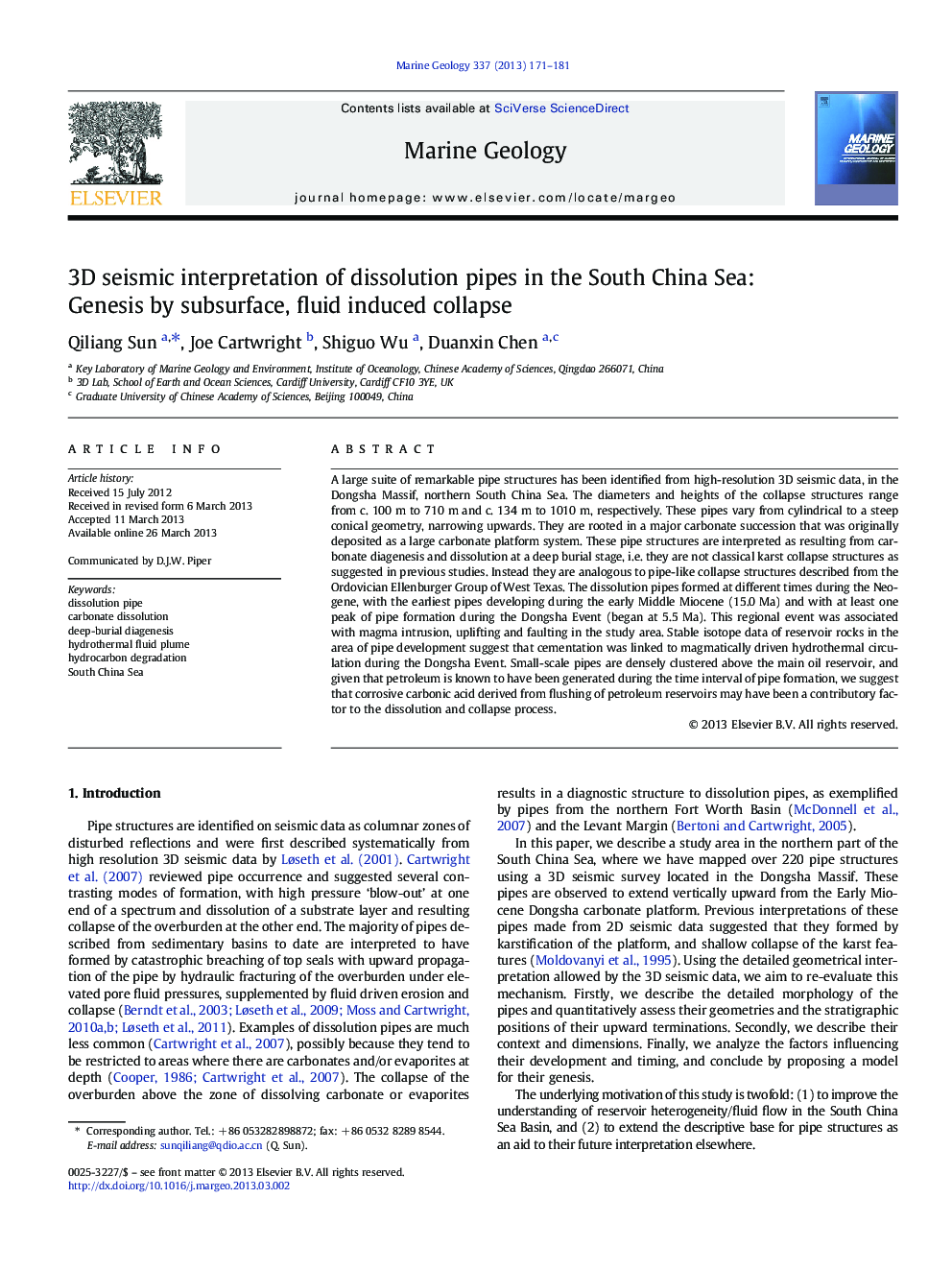| Article ID | Journal | Published Year | Pages | File Type |
|---|---|---|---|---|
| 6441795 | Marine Geology | 2013 | 11 Pages |
Abstract
A large suite of remarkable pipe structures has been identified from high-resolution 3D seismic data, in the Dongsha Massif, northern South China Sea. The diameters and heights of the collapse structures range from c. 100Â m to 710Â m and c. 134Â m to 1010Â m, respectively. These pipes vary from cylindrical to a steep conical geometry, narrowing upwards. They are rooted in a major carbonate succession that was originally deposited as a large carbonate platform system. These pipe structures are interpreted as resulting from carbonate diagenesis and dissolution at a deep burial stage, i.e. they are not classical karst collapse structures as suggested in previous studies. Instead they are analogous to pipe-like collapse structures described from the Ordovician Ellenburger Group of West Texas. The dissolution pipes formed at different times during the Neogene, with the earliest pipes developing during the early Middle Miocene (15.0Â Ma) and with at least one peak of pipe formation during the Dongsha Event (began at 5.5Â Ma). This regional event was associated with magma intrusion, uplifting and faulting in the study area. Stable isotope data of reservoir rocks in the area of pipe development suggest that cementation was linked to magmatically driven hydrothermal circulation during the Dongsha Event. Small-scale pipes are densely clustered above the main oil reservoir, and given that petroleum is known to have been generated during the time interval of pipe formation, we suggest that corrosive carbonic acid derived from flushing of petroleum reservoirs may have been a contributory factor to the dissolution and collapse process.
Related Topics
Physical Sciences and Engineering
Earth and Planetary Sciences
Geochemistry and Petrology
Authors
Qiliang Sun, Joe Cartwright, Shiguo Wu, Duanxin Chen,
